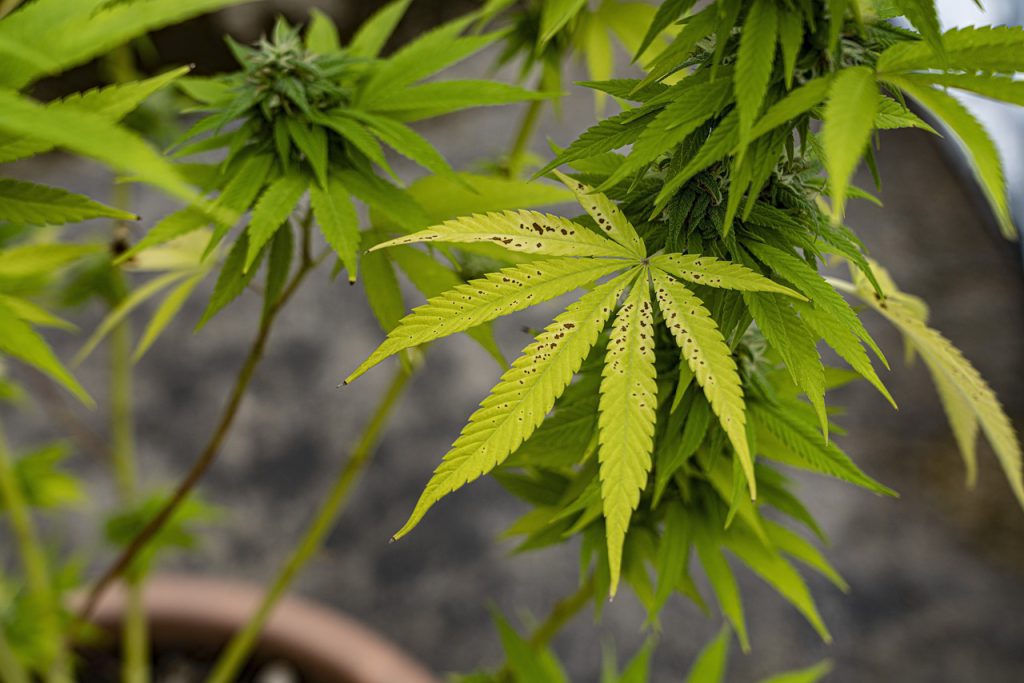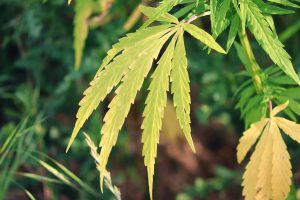Caution in the Presence of Yellow Spots on Leaves
It is important to note that yellow spots on leaves cannot be effectively treated. During the rainy season, moisture promotes the spread of fungal diseases, particularly those that result in the appearance of yellow spots on leaves. These yellow spots, also known as septoria leaf spot, are caused by a harmful fungus that damages cannabis leaves. The infection begins with the oldest leaves located at the bottom of the plant. Initially, yellow spots appear on the leaves, and then scales detach as the number of spores increases. The leaves then change color to dark brown, dry out, and fall off. If the disease is left untreated, it spreads to other leaves and infects the rest of the garden, which can be very dangerous.
Causes of Yellow Spots on Leaves: A key factor is excess moisture, which promotes the spread of fungi on the leaves. High humidity conditions during the cultivation of fruit plants or heavy rainfall outdoors are often associated with disease spread. Poor air circulation is also an important factor.
Treatment of Yellow Spots on Leaves: Unfortunately, there is no true treatment for septoria leaf spot. Affected areas must be removed as fungal spores easily spread. It is recommended to wear rubber gloves and cut the infected leaves using scissors. Immediately place all cut leaves in a bag to avoid contamination. If you are outdoors, do not discard them on the ground as the fungi can spread to the surroundings. After pruning, you can spray the remaining leaves and stem with a copper-based fungicide. However, if you encounter this issue during flowering, spraying is not advisable.

Preventive Measures: Shade growers can avoid this disease by controlling and monitoring the environment and relative humidity (RH) to keep them in check. A thermo-hygrometer can provide quick information on temperature and RH. By increasing air circulation with a regular or built-in fan in a confined space, you can improve airflow and significantly reduce leaf humidity. It is also recommended to avoid overwatering and not leave pots in stagnant water.
Summary of Solutions for Septoria Leaf Spot: The spores of these fungi can survive in the soil during winter and attack your plants in summer. Spores easily spread through wind and rain. Immediately remove affected leaves (with caution) to eliminate as many spores as possible. Prune leaf parts of the plants to improve air circulation. Avoid watering the leaves or overlapping them to prevent moisture. Ensure the soil beneath the plants is clean by sweeping off leaves and removing any leafy plants and vegetables. The use of mulch cover can also help prevent spore spread. Maintain healthy plants, as diseased plants are more susceptible to septoria leaf spot than healthy plants. To prevent this disease, it is recommended to practice crop rotation or move your growing area each year.
Fungicides containing copper are the main ingredients used, but biological fungicides can also be effective in preventing spore spread, although they are considered the best prevention method. Neem oil can be used to combat this issue; however, this depends on the cause of the spots on the leaves. It is worth noting that neem oil can leave an undesirable taste or odor on the flowers when used to treat buds. It is necessary to use a high-pressure sprayer to uniformly spray all leaves, as neem oil and water can separate. It is advisable to spray a small part of the plant and observe its reaction before spraying the entire plant.


 ไทย
ไทย
